Secure Workforce Solutions: Lida Group’s Container Worker Dormitories Incorporate Access Control in Prefab Building Designs
2025-Aug-21 15:22:24
By Admin
1. Introduction
In today’s dynamic industrial landscape, ensuring the safety and security of workers in remote or high-risk environments has become a top priority for organizations across sectors such as construction, mining, energy, and infrastructure. Worker dormitories, often located in isolated areas with large concentrations of personnel, are particularly vulnerable to security threats—including unauthorized access, theft, vandalism, and even potential harm to employees.
Lida Group, a global leader in prefabricated building solutions, has addressed this critical need by integrating advanced access control systems into its container worker dormitories. These innovative prefab structures combine the efficiency, durability, and rapid deployment of container-based construction with state-of-the-art security features, creating secure living environments that protect workers while streamlining operational management. This article examines how Lida Group’s container dormitories with integrated access control are redefining workforce security, from their design and functionality to real-world applications and future advancements.
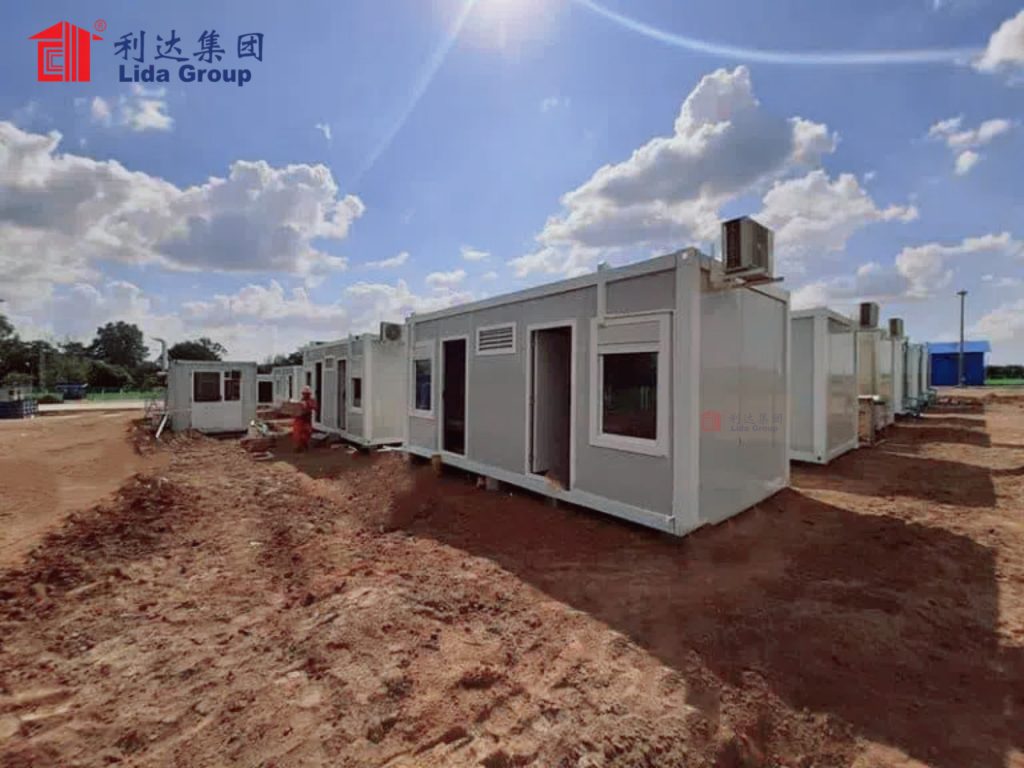
2. The Need for Enhanced Security in Worker Dormitories
2.1. Risks in Traditional Worker Accommodation
Traditional worker dormitories, whether temporary structures or repurposed buildings, often lack robust security measures, leaving them exposed to various risks:
- Unauthorized Access: Strangers, including local residents, trespassers, or even individuals with malicious intent, can easily enter dormitory premises, posing threats to worker safety and property.
- Theft and Vandalism: Tools, personal belongings, and equipment stored in or around dormitories are vulnerable to theft. Vandalism can disrupt operations and increase maintenance costs.
- Safety Concerns: In crowded dormitories, unauthorized entry can lead to altercations, spread of contraband, or even emergencies such as fires, where unaccounted-for individuals complicate evacuation efforts.
- Operational Inefficiencies: Without proper access tracking, managing worker movement, monitoring attendance, and ensuring compliance with site rules become challenging, leading to administrative burdens and potential legal liabilities.
These risks are amplified in remote locations, where response times to security incidents are longer, and local law enforcement may be scarce.
2.2. Evolving Regulatory and Operational Requirements
Post-pandemic, there has been a heightened focus on health and safety regulations, but security standards for worker accommodation have also evolved. Governments and industry bodies now mandate stricter measures to protect workers, including secure living environments, controlled access to facilities, and accurate tracking of personnel on-site.
For organizations, ensuring security is not just a legal obligation but also a strategic imperative. A secure workforce is more productive, with lower rates of absenteeism and turnover. Additionally, preventing security incidents reduces downtime, insurance costs, and reputational damage.
2.3. The Role of Prefab Container Dormitories in Security
Prefab container dormitories, with their modular design and factory-built precision, offer unique advantages for integrating security features. Unlike traditional construction, where security systems are often retrofitted as an afterthought, container dormitories allow access control and other security measures to be integrated during the manufacturing process. This ensures seamless functionality, reliability, and scalability—key for large-scale workforce accommodation.
Lida Group has leveraged this advantage, designing container dormitories where security is embedded into the structure’s DNA, from reinforced doors and windows to integrated access control systems.
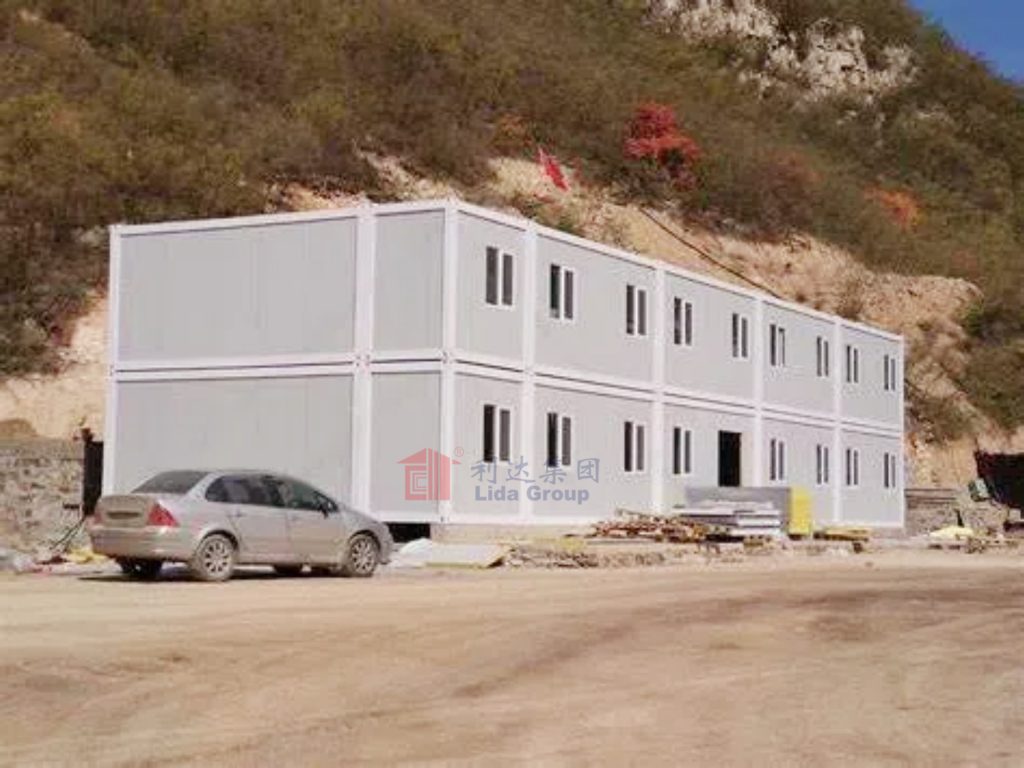
3. Lida Group’s Container Worker Dormitories: A Foundation for Security
3.1. Design and Construction of Secure Container Dormitories
Lida Group’s container worker dormitories are built using high-quality, reinforced shipping containers, modified to meet stringent security and comfort standards. Key structural features that enhance security include:
- Reinforced Materials: Galvanized steel frames and walls resist forced entry, while shatterproof glass windows (with optional metal grilles) prevent break-ins.
- Controlled Entry Points: Unlike traditional dormitories with multiple access points, container complexes are designed with limited, monitored entry and exit points, reducing vulnerability.
- Modular Layouts: Dormitories are arranged in clusters or rows with clear sightlines, facilitating surveillance. Shared spaces (such as kitchens, bathrooms, and recreation areas) are centrally located and easily monitored.
- Durability: The robust construction withstands harsh weather and attempted vandalism, reducing maintenance costs associated with security breaches.
These structural features provide a physical barrier against threats, complementing the electronic access control systems integrated into the design.
3.2. Integration of Access Control Systems in Prefab Designs
Lida Group’s innovation lies in integrating access control systems into the prefab manufacturing process, ensuring that security is not an add-on but a core component. This integration offers several benefits:
- Precision and Reliability: Factory-installed access control systems are tested under controlled conditions, ensuring compatibility with the container’s structure and reducing on-site installation errors.
- Scalability: As container complexes expand, additional access points can be easily integrated into the existing system, maintaining consistent security protocols.
- Cost-Effectiveness: Integrating systems during manufacturing is more cost-effective than retrofitting, as it avoids the need for on-site modifications and reduces labor costs.

4. Access Control Systems in Lida Group’s Container Dormitories
4.1. Types of Access Control Technologies
Lida Group offers a range of access control technologies, customizable to project needs, ensuring that security measures align with the site’s risk level and operational requirements. These include:
- RFID (Radio-Frequency Identification) Systems: Workers are issued RFID cards or key fobs that communicate with readers at entry points. The system logs access times and restricts entry to authorized personnel only. RFID is ideal for large workforces, as cards are durable and easy to replace.
- Biometric Systems: For high-security sites, biometric access (fingerprint, facial recognition, or iris scanning) is available. Biometrics eliminate the risk of lost or stolen credentials, as access is tied to unique physical characteristics.
- Keypad and PIN Systems: Suitable for smaller dormitories or secondary access points, these systems require users to enter a unique code, with access logs stored digitally.
- Mobile-Based Access: Workers use smartphones to scan QR codes or connect via Bluetooth to unlock doors, offering convenience and reducing the need for physical credentials. Mobile systems also allow remote access management and instant deactivation of credentials if needed.
4.2. Key Features of the Access Control Systems
Lida Group’s access control systems are designed to be robust, user-friendly, and integrated with other security and operational tools. Key features include:
- Centralized Management: A central software platform allows administrators to manage access permissions, issue or revoke credentials, and monitor real-time access across all dormitory entry points. This is particularly valuable for large complexes with multiple buildings.
- Access Logging and Reporting: The system records every entry and exit, generating reports on worker movement, late-night access, or attempted unauthorized entry. These logs aid in incident investigations and compliance audits.
- Integration with Surveillance: Access control systems are linked to CCTV cameras, so every access event is captured on video. This provides visual verification of who entered or exited, enhancing accountability.
- Emergency Features: In case of emergencies (e.g., fire, medical incident), the system allows for remote unlocking of all doors to facilitate evacuation, while still tracking who is on-site.
- Offline Capability: Systems include backup power and offline functionality, ensuring access control works even during power outages or network disruptions.
4.3. How Access Control Enhances Security and Operations
The access control systems in Lida Group’s container dormitories deliver multiple benefits:
- Preventing Unauthorized Access: By restricting entry to authorized personnel only, the systems reduce theft, vandalism, and safety risks.
- Accurate Tracking: Real-time access logs help managers track worker presence, ensuring compliance with curfews, quarantine protocols (if needed), or site-specific rules.
- Incident Response: In the event of a security incident, access logs and CCTV integration allow for quick identification of suspects or witnesses.
- Administrative Efficiency: Automated access management reduces the need for manual check-ins, freeing up staff for other tasks. Reports on access patterns can also inform operational decisions, such as adjusting dining hours or transport schedules based on worker movement.

5. Additional Security Features in Lida Group’s Container Dormitories
5.1. Surveillance and Monitoring Systems
Access control is complemented by comprehensive surveillance systems, including:
- CCTV Cameras: High-definition cameras are strategically placed at entry points, walkways, and common areas, with night vision and motion detection capabilities. Footage is stored locally or in the cloud, accessible to security personnel.
- Motion Sensors and Alarms: In restricted areas (e.g., storage rooms, utility closets), motion sensors trigger alarms if unauthorized movement is detected, alerting security teams.
- Audio Intercoms: Two-way intercoms at entry points allow security personnel to verify visitors before granting access, even remotely.
5.2. Emergency and Safety Integration
Security systems are integrated with emergency protocols to ensure worker safety:
- Fire and Smoke Detectors: Linked to access control, these detectors can automatically unlock doors and trigger alarms during a fire, while access logs help confirm all workers have evacuated.
- Panic Buttons: In common areas or individual rooms, panic buttons connect to a central security hub, enabling rapid response to emergencies.
- Evacuation Lighting and Signage: Clearly marked exits, illuminated by backup lighting, guide workers to safety, with access control systems ensuring exit doors remain unlocked during emergencies.
5.3. Perimeter Security
To protect the entire dormitory complex, Lida Group offers perimeter security features such as:
- Fencing and Gates: Chain-link or steel fencing with access-controlled gates surrounds the dormitory area, preventing unauthorized entry from the perimeter.
- Perimeter Alarms: Sensors along the fence detect breaches (e.g., cutting, climbing) and trigger alarms.
- Vehicle Access Control: Separate systems for vehicles, including RFID or license plate recognition, ensure only authorized vehicles enter the complex.

6. Benefits of Access-Controlled Container Dormitories
6.1. Enhanced Worker Safety and Well-Being
The primary benefit is a safer living environment for workers. Knowing that access is controlled and monitored reduces anxiety, improves morale, and fosters a sense of security. This translates to better sleep, lower stress levels, and higher productivity. In emergencies, accurate access logs ensure all workers can be accounted for, minimizing risks of injury or loss of life.
6.2. Reduced Security Incidents and Costs
Access control systems deter theft, vandalism, and unauthorized entry, reducing the frequency and severity of security incidents. This leads to lower costs associated with repairs, replacements, insurance claims, and legal fees. For example, a mining company using Lida Group’s dormitories reported a 60% reduction in theft-related losses within six months of implementation.
6.3. Improved Operational Efficiency
Access logs provide valuable data for workforce management. Managers can track attendance, monitor compliance with curfews, and identify patterns in worker movement (e.g., peak times for using common areas). This data informs decisions on resource allocation, such as adjusting staffing for dining facilities or transport schedules.
Administrative tasks are streamlined, as access credentials replace manual sign-in sheets, reducing paperwork and errors. The centralized management system also simplifies onboarding and offboarding—new workers receive credentials quickly, while departing workers’ access is instantly revoked.
6.4. Compliance with Regulations and Standards
By integrating access control, Lida Group’s container dormitories help organizations meet regulatory requirements for worker safety and security. Access logs provide audit trails for inspections, demonstrating compliance with laws governing worker accommodation, data privacy, and emergency preparedness.
In industries with strict security protocols (e.g., energy, defense), these systems ensure only authorized personnel enter sensitive areas, reducing the risk of breaches and non-compliance penalties.

7. Real-World Applications: Secure Container Dormitories in Action
7.1. Remote Mining Camp in Australia
A mining company operating in the remote Pilbara region of Australia needed to house 500 workers in a high-risk area with a history of theft and trespassing. Lida Group supplied 125 container dormitories with integrated RFID access control, perimeter fencing, and CCTV surveillance.
Workers received RFID cards programmed to grant access only to their assigned dormitory, common areas, and the main exit. The system logged all movements, and security personnel monitored entry points via CCTV. Within three months, theft incidents dropped by 75%, and the company reported improved worker satisfaction due to enhanced safety. The access logs also simplified attendance tracking, reducing administrative time by 30%.
7.2. Construction Site Dormitory in the Middle East
A large construction project in the Middle East required secure accommodation for 200 workers, with strict compliance to local labor laws mandating controlled access and accurate attendance records. Lida Group’s container dormitories were equipped with biometric (fingerprint) access control, linked to the project’s payroll system.
Workers used their fingerprints to enter the dormitory complex and their individual rooms, with access logs automatically feeding into attendance reports. This eliminated time theft and ensured compliance with working-hour regulations. The system also restricted access to common areas during designated hours, reducing noise and disturbances. The construction company noted a 20% reduction in disciplinary issues and improved relations with local authorities due to compliance with labor laws.
7.3. Energy Sector Worker Housing in North America
An energy company operating a remote wind farm in Canada needed secure housing for 100 technicians, with strict security to protect equipment and prevent unauthorized access to the site. Lida Group’s solution included container dormitories with mobile-based access control, where workers used smartphones to unlock doors.
The system allowed remote management—security teams in the company’s headquarters could monitor access in real time and revoke credentials instantly if a worker left the project. Perimeter alarms and CCTV integration prevented trespassing, while access logs helped track technician movement for emergency response. The company reported zero security incidents over a two-year period, with technicians praising the convenience of mobile access.
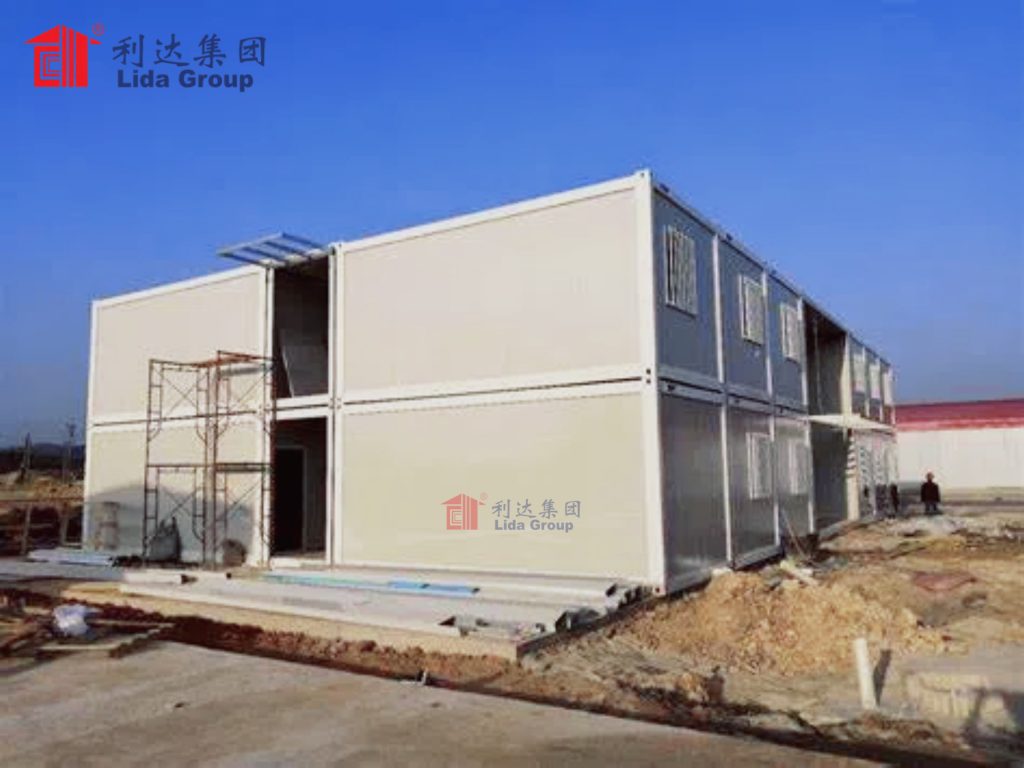
8. Challenges and Solutions in Implementing Access-Controlled Dormitories
8.1. Technological Reliability in Remote Areas
Remote sites often have limited internet connectivity, which can disrupt access control systems relying on cloud-based management. Lida Group addresses this by:
- Offline Capability: Systems store access data locally, syncing with the cloud when connectivity is restored. This ensures continuous operation even in remote areas.
- Backup Power: Uninterruptible power supplies (UPS) and solar backups prevent system failures during power outages.
- Ruggedized Hardware: Access readers and controllers are designed to withstand extreme temperatures, dust, and moisture—common in remote environments.
8.2. User Adoption and Training
Workers may be unfamiliar with access control systems, leading to resistance or improper use. Solutions include:
- Simplified Interfaces: User-friendly readers and clear instructions reduce confusion. For example, RFID cards require minimal training—workers simply tap the reader.
- On-Site Training: Lida Group provides training sessions for workers and managers, covering system use, credential management, and troubleshooting.
- Support Systems: On-site support teams or 24/7 remote assistance help resolve issues quickly, ensuring workers can access their accommodation without delays.
8.3. Scalability for Large Workforces
Managing access for thousands of workers can strain system performance. Lida Group’s systems are designed with scalability in mind:
- Cloud-Based Platforms: For large projects, cloud-based management systems handle high volumes of data and users, with unlimited scalability.
- Modular Architecture: Additional access points and readers can be added without disrupting existing systems, allowing the dormitory complex to expand as the workforce grows.
- Batch Processing: Credentials for new workers can be issued in batches, streamlining onboarding for large groups.
8.4. Data Security and Privacy
Access control systems collect sensitive data (e.g., biometric information, access logs), raising privacy concerns. Lida Group ensures compliance with data protection laws (e.g., GDPR, CCPA) through:
- Encryption: Data is encrypted in transit and at rest, preventing unauthorized access.
- Access Restrictions: Only authorized personnel can view or modify sensitive data, with audit trails for all system changes.
- Anonymization: Biometric data is stored as encrypted templates, not raw images, reducing privacy risks.
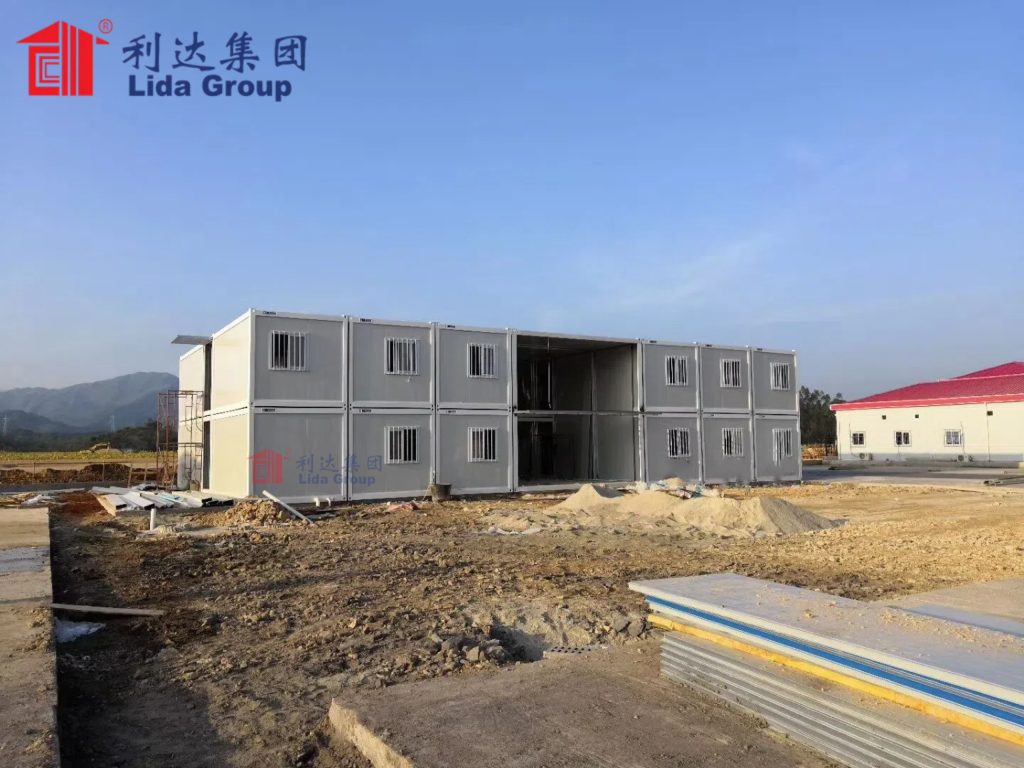
9. Future Trends in Access-Controlled Container Dormitories
9.1. Integration with Smart Site Management
Future systems will integrate access control with broader smart site management platforms, creating interconnected ecosystems. For example:
- IoT Sensors: Access data combined with sensor data (e.g., occupancy levels, energy use) optimizes resource allocation—heating in unoccupied dormitories can be reduced, or cleaning schedules adjusted based on room usage.
- AI Analytics: Artificial intelligence analyzes access patterns to predict security risks (e.g., unusual after-hours access) and alert security teams proactively.
- Integration with Health Systems: Post-pandemic, access control could link to health data (e.g., vaccination status, test results), ensuring only healthy workers enter dormitories.
9.2. Advanced Biometrics and Multi-Factor Authentication
Biometric systems will become more sophisticated, with facial recognition using 3D mapping to prevent spoofing, and voice recognition as an additional layer of security. Multi-factor authentication—combining, for example, an RFID card with a fingerprint—will become standard for high-security sites, reducing the risk of credential theft.
9.3. Sustainability and Energy Efficiency
Access control systems will integrate with energy-saving features, such as:
- Occupancy-Driven Lighting/Heating: Access logs trigger lighting and heating in rooms only when workers are present, reducing energy waste.
- Solar-Powered Systems: Off-grid dormitories will use solar-powered access control, aligning with sustainability goals and reducing reliance on diesel generators.
9.4. Enhanced User Experience
Future systems will prioritize convenience without compromising security, with features such as:
- Contactless Access: Further development of mobile and biometric systems reduces physical contact, improving hygiene and user satisfaction.
- Personalized Access: Workers can customize access permissions for visitors (e.g., allowing a colleague to enter their room temporarily) via a mobile app, with managers retaining oversight.
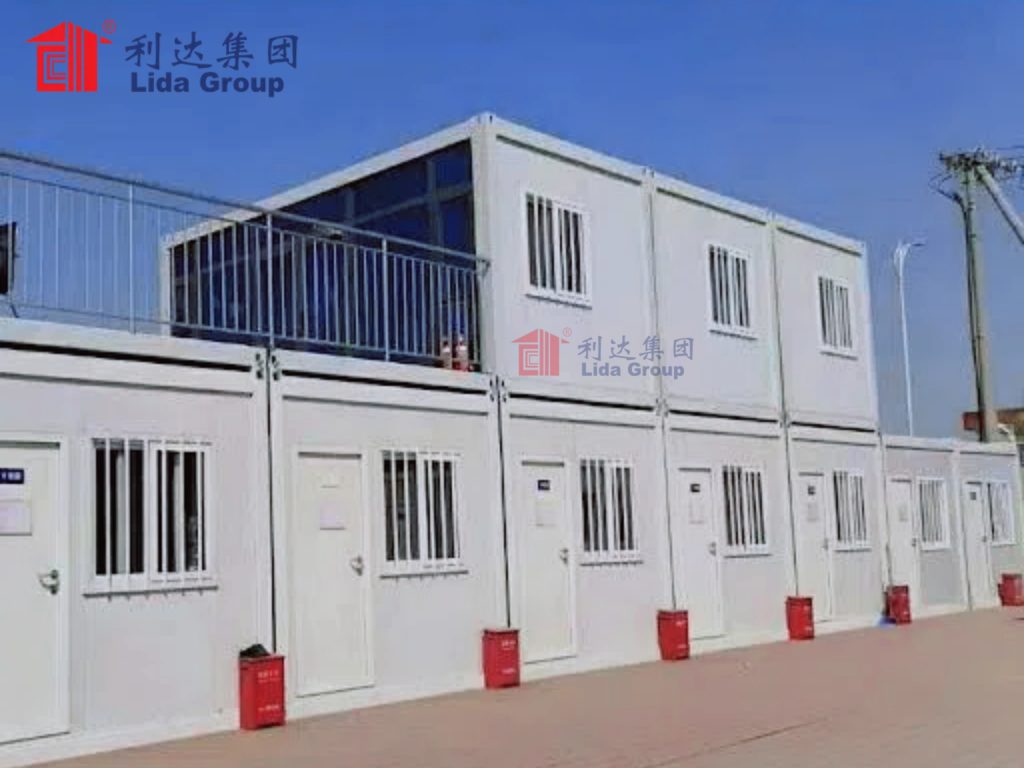
10. Conclusion
Lida Group’s integration of access control systems into its container worker dormitories represents a paradigm shift in how organizations approach workforce security in challenging environments. By embedding security into the prefabrication process, these structures offer a seamless blend of physical robustness and technological sophistication, addressing the critical risks faced by traditional worker accommodation.
The combination of reinforced container designs, advanced access control technologies (from RFID to biometrics), and complementary security features (surveillance, perimeter protection, emergency integration) creates a comprehensive security ecosystem. This ecosystem not only deters threats but also enhances operational efficiency, simplifies compliance, and prioritizes worker well-being—factors that directly contribute to project success.
Real-world applications across mining, construction, and energy sectors demonstrate the versatility and effectiveness of these solutions, with measurable improvements in security incident reduction, administrative efficiency, and worker satisfaction. Challenges such as remote connectivity, user adoption, and scalability are met with innovative solutions, ensuring that security remains reliable and accessible regardless of project size or location.
Looking ahead, the integration of smart technologies, AI analytics, and sustainable features will further elevate these dormitories, making them not just secure but also adaptive, efficient, and aligned with future workforce needs. As industries continue to recognize security as a cornerstone of operational excellence, Lida Group’s access-controlled container dormitories stand as a model for secure, scalable, and worker-centric accommodation.
In essence, these structures are more than just housing—they are a strategic investment in workforce security, operational resilience, and long-term success. By prioritizing security through innovative prefab design, Lida Group is helping organizations build safer, more productive work environments, even in the most challenging settings.

Related news
-
Arctic-Grade Accommodation: Lida Group's Insulated Container Worker Dormitories Feature High-Quality Prefab Building Envelope
2025-08-21 14:21:54
-
Post-Pandemic Compliance: High-Quality Container Houses by Lida Group Integrate Health-Focused Prefab Building Ventilation Systems
2025-08-21 14:48:16
-
Mega-Project Efficiency: Prefab Building Solutions Deliver Rapid Container Worker Dormitory Deployment for Remote Construction Sites
2025-08-21 13:21:44
contact us
- Tel: +86-532-88966982
- Whatsapp: +86-13793209022
- E-mail: sales@lidajituan.com


